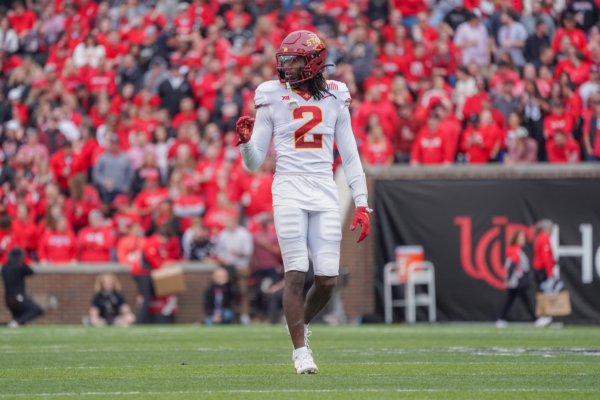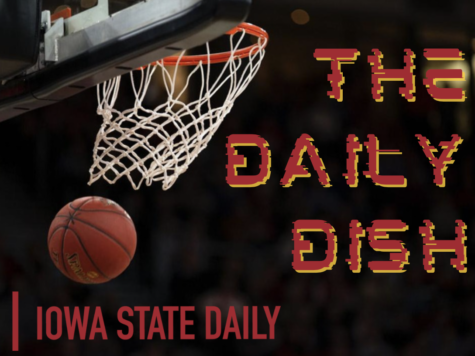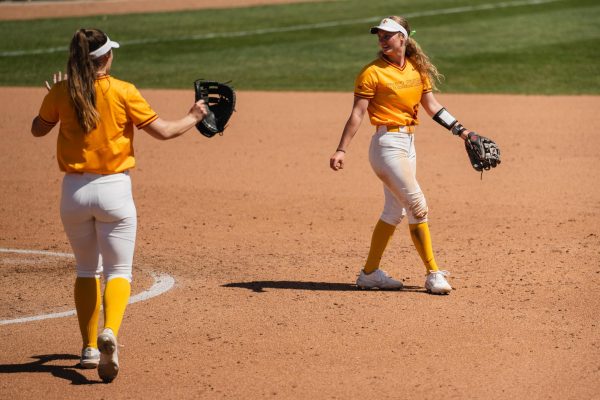PAULSON: Don’t give grades for draft picks … yet
April 29, 2008
My stats coming out of high school weren’t all that impressive.
3.1 GPA. Roughly 260 out of 657 in class rank. I did make a strong showing at my pro day, pulling a 32 out of somewhere on my ACT.
But despite the shortcomings, or lack of standout categories, Iowa State chose me to come to school here. It might not have made sense just by looking at the numbers.
Even after my freshman year, some pundits might have been saying it was a mistake.
That spring I had what I like to call my “oops you actually do have to try in college” semester. I didn’t prepare very well or try very hard, and my GPA proved that. If you had asked Iowa State, it probably wouldn’t have said it made a good choice in granting me admission.
But since then I think I’ve proved I belong in this league. I’ve made the dean’s list three times, never failed a class and will graduate in four years (plus the summer for an internship.)
Looking back, it wouldn’t make sense to judge Iowa State’s decision to pick me based on what I had done in high school or in my first year. It wasn’t a long enough time to properly assess my contributions, and in trusting in me, Iowa State got itself a quality student.
I tell you this story in hopes of pointing out how ridiculous it is to say whether or not a team had a successful NFL draft before a practical amount of time has passed.
Monday afternoon, fewer than 24 hours after the final pick was made, draft “grades” were popping up all over the Internet.
Mel Kiper Jr., ESPN’s draft guru who spends the whole year grading players, is the biggest purveyor of this farce.
Only one team, the Kansas City Chiefs, received an A from Professor Mel. The other 31 teams received a smattering of average grades, ranging from B-pluses to a league-worst C-minus for the Jacksonville Jaguars.
This dumb grading system is theoretically harmless, but on a Web site with as many readers as www.espn.com, it can have a serious impact on a fan base.
Take the 2006 draft for example. The Houston Texans, proud takers of the No. 1 pick, seemed to have narrowed down its options to three players: USC running back Reggie Bush, the reigning Heisman Trophy winner who was drawing comparisons to just about every hall-of-fame running back ever, Texas quarterback Vince Young, who was fresh off a National Championship win over Bush’s Trojans and the hometown favorite, and defensive end Mario Williams, a great player out of North Carolina State who came on like a freight train after the NFL combine.
The Texans chose Williams to help solidify an emerging defense and were immediately crucified for it. The team was filleted countless times by media of all levels, and the fans took notice. The Houston populace wanted the flashy Bush or the local boy, Young, and there was serious unrest when Williams was chosen, especially with all the negative press it got.
This past season, Williams was fourth in the league in sacks, while Young was 26th in quarterback rating and Bush was 38th in rushing yards, missing the last four games. Formerly a sure thing, Bush has only averaged 3.7 yards per carry in his career and talk has begun that he might be a bust.
Ask most people today and they would probably take Williams.
The point isn’t to rip one particular draft or point out one team’s success. The point is that evaluating a draft before the players have even walked through the practice facility door is not only stupid – it’s irresponsible.
Remember when the New England Patriots passed with flying colors when they drafted Tom Brady in the sixth round?
Yeah. Me neither.
Nick Paulson is a senior in journalism and mass communication from Minnetonka, Minn.
















